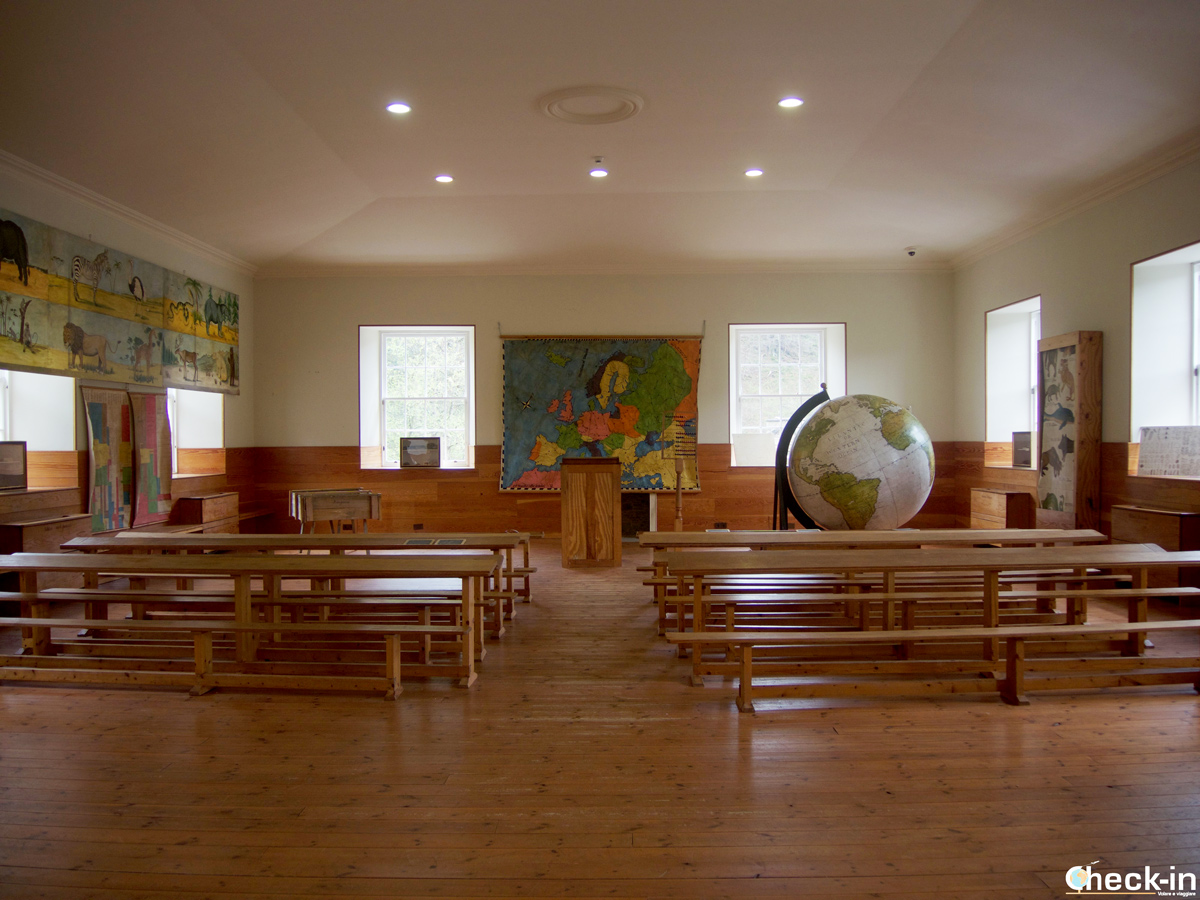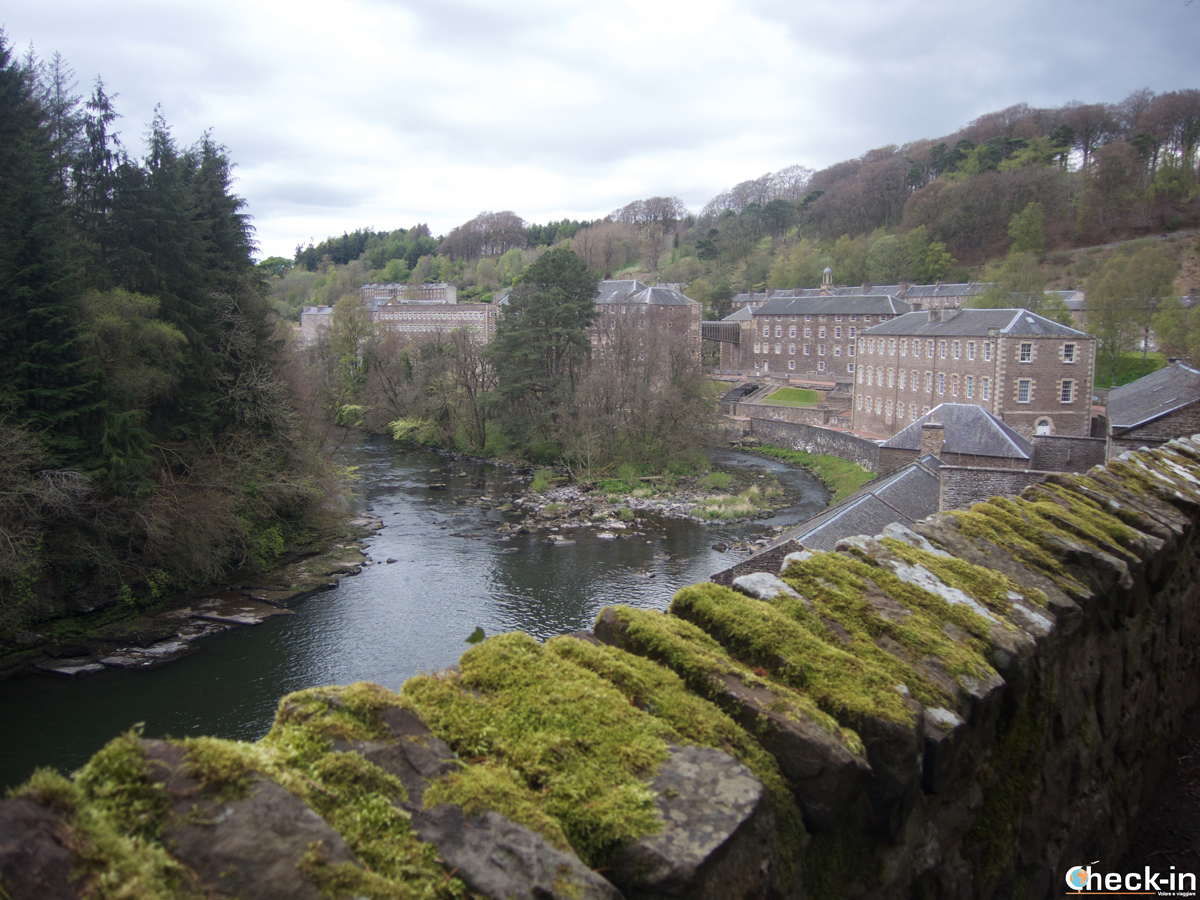During my last stay in Glasgow I had the chance to visit New Lanark. I had heard a lot about this cotton mill village founded in 1785 by David Dale and so I was particularly curious to see it because it’s one of the six Scottish historical sites included in the UNESCO World Heritage list.
A day excursion allowed me to enjoy the main attractions and then take a stroll along the Falls of Clyde, a fantastic natural scenery just around the village.
Short history of New Lanark and the legacy of Robert Owen
David Dale founded New Lanark in 1785 on the banks of River Clyde. From 1800 to 1825 the cotton mill village was managed by Robert Owen and thanks to his revolutionary way of thinking it stood out as a “perfect industrial city model”. Indeed, inspired by the theories linked to the utopian socialism, he introduced several social and educational reforms never seen before that would have changed the the industrial world in the decades to come, for example:
- the working hours were reduced to 10,5;
- children under 10 weren’t allowed to work and they went to the School for Children established in 1816;
- in 1813 a village store was opened, selling good quality products at low prices.
Overall, Owen’s purpose was to improve the living conditions of every worker and inhabitant, convinced that the well-being of individuals-workers was related to a greater productivity.
After 1825, Owen tried to export the “New Lanark” model to America by founding New Harmony. Unfortunately, the Owen’s plans for New Harmony didn’t come to fruition due to a lack of practical skills within the first residents of the town. Owen returned to the UK and New Harmony continued to develop and still stands today as an important historical site with strong links to New Lanark.
Industrial activity in New Lanark ceased in 1968 and in the following years the area went in decline. In 1974 the Scottish Charity New Lanark Trust was created to avoid any further degradation and to restore the entire site maintaining at the same time its historical authenticity. In 2001 New Lanark was finally included in the Unesco World Heritage List for its social-cultural relevance.

What to see in New Lanark in one day
Following the gurgle of River Clyde I suddenly find myself in front of the original buildings built with local sandstone. The cars parked in front of the Visitor Centre remind me that I haven’t travelled back in Robert Owen’s time.
The New Lanark Visitor Centre
This is the core of the village and includes the main attractions as well as the exhibitions that take place during the year.
First of all, I wandered a little admiring the restored mills – one of them today hosts the New Lanark Mill Hotel – and reading the information plaques. Some of them report inspiring Robert Owen’s quotes while others the concern for the environment. As a matter of fact, New Lanark has always used the energy coming from the water of the river, firstly for industrial production and today also for the lighting and heating of most of the buildings around.

Annie McLeod Experience Ride
Possibly one of my highlights of the day, a unique experience travelling in motorised pods back in 1820s. Guided by the voice of the mill worker Annie McLeod, she tells her story and how living in New Lanark at that time was.
Have a glimpse of it in the video below.
People, Cotton & Working Textile Machinery
Here I could see the machines used for the textile production and to discover how they work. In fact, the spinning Mule is still in operation with the only difference that nowadays wool is produced instead of cotton. Regarding that, the New Lanark Wool can be purchased in the Mill Shop or directly in the New Lanark Wool & Textiles online shop.
For me, this was another incredible experience as I’d never had the opportunity to observe these historical machines in action producing high quality wool!

The Roof Garden
Located at the 7th floor, this open space contains over 70 plants and shrubs, several animal sculptures, a fountain and a breathtaking panoramic view of New Lanark and the Falls of Clyde.

Robert Owen and Millworkers’ Houses
The visit continues discovering the way of living of the millworkers during the 1820s and the 1930s. In the first case, when around 2.500 people lived in New Lanark, there was just one room shared by 10 or even more people that included few basic pieces of furniture.
Then, after the Victorian Age, the houses – still without bathrooms – had running water and free electric light.


On the other hand, Robert Owen’s house is the only one in the village to have more rooms than people.
Once there I could admire some original elements like the desk, the amazing furniture of the sitting room and the staircase that leads to the pantry.


Village Store
Owen inaugurated the store in 1813 so that the inhabitants were able to buy good quality products at low prices. Like the others places, even this one has been perfectly restored and today it’s also possible to purchase souvenirs and taste the famous local ice cream… yummy!

Historic Classroom and Saving New Lanark Exhibition
Owen strongly believed that “education” was a crucial element for a proper social reform. For this reason, he created the first Infant School in the world. The Historic Classroom show us how was going to school in Annie McLeod’s time. Children can also dress up as schoolchildren of her age.
At the same floor you have to visit the Exhibition that retains original objects from New Lanark and it’s also showcased all the work done to restore the village over the last 40 years.


Exploring the Falls of Clyde
After visiting New Lanark I spent a couple of hours “getting lost” in the woodland while looking at the beautiful series of Linn (Scots translation for “waterfall”) – Stonebyres, Dundaff, Corra and Bonnington – on River Clyde.
This incredible landscape has attracted visitors, including Walter Scott and other important international personalities, for centuries and nowadays it’s our turn to fall in love with it.
While wandering in this area, managed by the Scottish Wildlife Trust, you may try to spot the local flora and fauna.





Practical information for visiting New Lanark
You can arrive to New Lanark
- by car, 25 miles from Glasgow and 35 miles from Edinburgh;
- by bus, with a daily service from Glasgow Buchanan Station;
- by train (as I did), from Glasgow Central. The station is 1,5 miles from the village and there’re local buses just in front of the Railway station.
The Visitor Centre opens
- April-October, 10 am-5 pm;
- November-March: 10 am-4 pm.
The Passport Ticket allows you to visit all the attractions and includes the daily guided tours (11 am and 2 pm)
- adult, £10.50
- child (3-15 years old), £8.00 – under 3 years, free;
- concession (senior and student), £9.50;
- family (2 adults and 2 children), £34.00.



